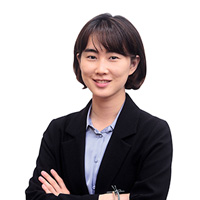[Our Museums] Cheongju Early Printing Museum chronicles birth of publishing
By Kim Hae-yeonPublished : Sept. 19, 2023 - 15:20

CHEONGJU, North Chungcheong Province -- In the digital age we live in, it is easy to forget the origins of communication and information dissemination.
The Cheongju Early Printing Museum in Cheongju, North Chungcheong Province, is a testament to the importance of printing throughout history, long before smartphones and laptops became commonplace.
The museum shows how people conveyed their thoughts, ideas and stories through the tangible and enduring medium of print.
Opened in March 1992, the museum stands on the site of the temple of Heungdeoksa where "Jikji," the world's oldest extant book printed using movable metal type, was made. The ninth-century Buddhist temple was burnt to the ground at the end of the Goryeo period.
The Cheongju Early Printing Museum showcases materials illustrating the history of printing and publishing culture and its development in Korea. Over 650 artifacts, including ancient movable metal types and wooden block printed books from the Goryeo and Joseon periods, as well as Buddhist relics from the Heungdeoksa site, are on display.
Published in 1377 in the third year of Goryeo King U's reign, "Jikji" predates Gutenberg's 42-line Bible in Germany by approximately 78 years. The full name of "Jikji," also called "Jikji Simche Yojeol," is "Baekunhwasang-chorok-buljo-jikjisimcheyojeol."
Only the second volume of the two-volume "Jikji," an anthology of teachings of Korea's Seon Buddhism authored by the Ven. Baekun and his disciples, remains. The surviving "Jikji" was inscribed onto the UNESCO Memory of the World Register in September 2001.


The only extant "Jikji" is held by the National Library of France. French diplomat Victor Collin de Plancy acquired the 30-page book during his time in Seoul in the late 1880s. He later sold it to French collector Henri Vever in 1911. In 1950, Vever donated the book to the French state library.
A meticulously crafted copy of "Jikji" is on display at the Cheongju Early Printing Museum. It was created by Lim In-ho, Intangible Cultural Heritage title holder of making metal printing types and book printing.
It took Lim five years of painstaking work to re-create the 30,000 metal type pieces set in 78 plates, using the traditional beeswax method. Each Chinese character, predating the introduction of Hangeul, the Korean alphabet, was carefully hand-cut.
The museum also features early Korean books, both handwritten and stone-engraved sutras, as well as writings published using wooden blocks. Print works and typography from China and Japan are also on display, allowing viewers to compare the printing technologies of East Asian countries.
At the Cheongju Inheritance Center of Type Metal, located across from the museum, visitors can see a live demonstration of the metal type casting process at designated hours on Fridays, Saturdays and Sundays.


Also at the center, visitors can try their hand at learning the basics of traditional printing techniques, such as engraving. Lim's son, who trains and works under him, and staff from the center, will assist the workshop participants.
"Metal type casting is a testament to infinite patience and endurance, which I came to realize during my five-year involvement in the reproduction of 'Jikji.' A single mistake can lead to redoing the entire casting," Lim told The Korea Herald.
"This ancient medium has completely faded from history, but the process imparts knowledge that is difficult to acquire in the present."
Head to Heungdeoksa to the right of the museum for a stroll. The site was designated Historic Site No. 315 in 1986. While the temple was destroyed in a fire in the 15th century, the re-creation of Geumdang, a Buddhist prayer hall, and a three-story stone pagoda was completed in 1991.
For those who are keen to explore the evolution of printing methods in modern times, the Modern and Contemporary Printing Exhibition Center is conveniently located across the street.
Cheongju Early Printing Museum operates from 9 a.m. to 6 p.m. It is closed on Mondays. The last admission is an hour before closing.
-------------------------
This is the first article in a series that introduces a variety of unique museums that focus on a diverse range of themes, from art and science to history and technology. — Ed.









![[Today’s K-pop] Blackpink’s Jennie, Lisa invited to Coachella as solo acts](http://res.heraldm.com/phpwas/restmb_idxmake.php?idx=644&simg=/content/image/2024/11/21/20241121050099_0.jpg&u=20241121172748)








